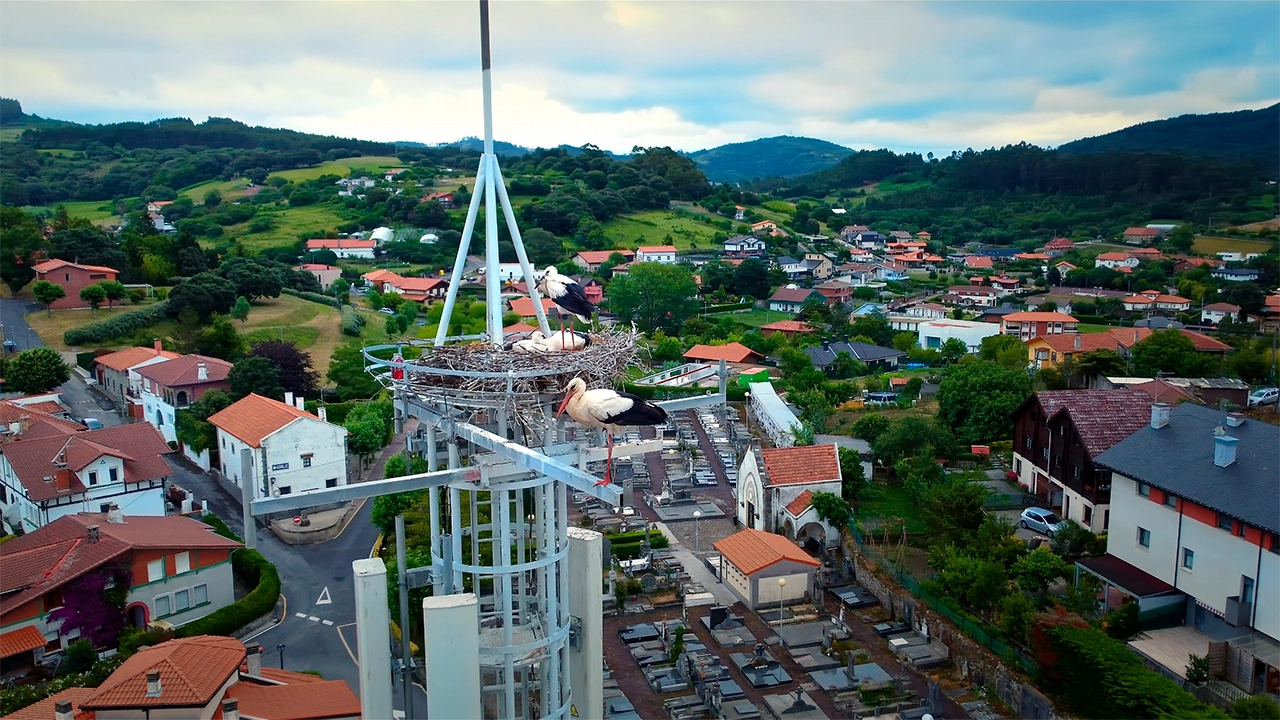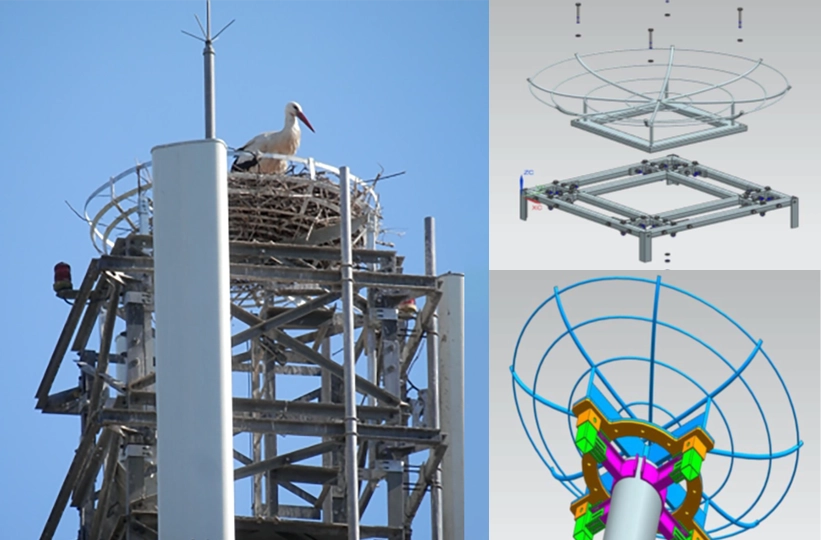Trends
Trends
SEP
13
2022
TIS
A Stork in February heralds warmer weather
Cellnex’s Nest Baskets project aims to reconcile telecommunications infrastructure with biodiversity conservation
Every year thousands of white storks (Ciconia ciconia) nest in telecommunications towers, high voltage towers and on top of bell towers because of the good visibility and safety conditions that these infrastructures provide.
This bird, considered a “vulnerable species” as recently as the 1980s, and is currently on the list of Wild Species Under Special Protection, has enjoyed a significant recovery in numbers in recent decades because of its ability to rapidly adapt to climate conditions and those of its surroundings to feed and establish itself. In fact, the white stork has changed its migratory patterns and is choosing to stay in the same place throughout the year. The Spanish proverb that spotting these migratory birds in early February heralds the arrival of good weather is no longer grounded in fact. However, it is a certain relief from a biodiversity point of view to learn that white stork numbers have recovered, with more than 30,000 breeding pairs recorded at the last census of 2004, with these numbers continuing to increase, according to data from the organisation SEO BirdLife (Spanish Ornithological Society). We do not often read news like this regarding the conservation of some species as a result of climate change.
However, we should not lose sight of the anthropogenic influence of this adaptation, as these birds have gone from finding their food in wetlands to feeding off urban landfills, which could cause a health problem for the stork in the medium and long term.
It is clear therefore that humans share moments, legends and spaces with the stork. And so it is that every February the birds coincide in several sites owned by Cellnex as they search for a place to build their nests, where they stay up to nine months. The size of the nests, which can weigh as much as eighty to a hundred kilos, poses a significant occupational health risk for the people performing work in the centres.
This is an aspect that needs to be monitored, as is the accumulation of nests around the same site, or of materials and excrement, which can also cause problems in infrastructures. For this reason, Cellnex blocks access to the sites with nesting until they are removed, subject to authorisation by the competent administration.
Furthermore, various European and regional regulations protect wildfowl and their offspring to avoid damage or removal of their nests during the nesting period, as failure to do so could limit the breeding capacity of some of these species.
To this end, Cellnex has promoted an initiative called Cestas Nido, or Nest Baskets, an efficiency project that is part of the Strategic Sustainability Plan (2019-2023). It involves installing basket-shaped platforms to attract nesting birds, mostly storks, and to a lesser extent, nests of crows and other species have also been identified.
The project, which began at the end of 2020 through a pilot test, has been continued on a larger scale for 2022 and 2023 in light of the good results observed in the 2021 site evaluation, which showed a 72% success rate. “The initiative helps to conserve these species while avoiding the recurring expense of annually removing nests and the operational and business difficulties caused by banning access to the sites due to occupational risk prevention requirements”, stated Cellnex Spain’s site management, legalisations and environment management team.
Integrating these galvanized steel structures as a support for the nests in the towers themselves helps to reduce the risk of the nests falling while avoiding the need to remove them each year. This measure is aligned with Cellnex’s environmental commitment and covered in its second report on Environment and Climate Change under the Natural Spaces and Biodiversity pillar and makes it possible to continue safely performing maintenance and operation tasks (own and customers´), as well as the installation of new services on communications towers in a safe and secure manner while preserving birdlife.
Cellnex plans to implement this solution in approximately two hundred sites in Spain and to present the project in other countries in which the company operates where the situation is similar. For instance, Cellnex Portugal already has a habitat and biodiversity protection procedure that incorporates consultation with the ICFN (Nature Conservation and Forestry Institute) whenever a stork nest interferes with tower intervention. Also in Ireland, where the company has more than three hundred sites in forest areas –that provide a unique habitat for many other species–, Cellnex actively collaborates with the state forestry company Coillte to assess and ensure the least environmental impact of infrastructure in these areas and the maintenance of biodiversity.



















